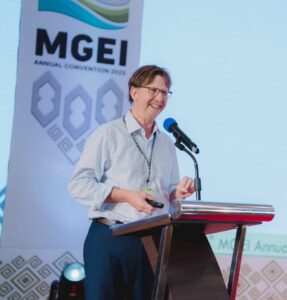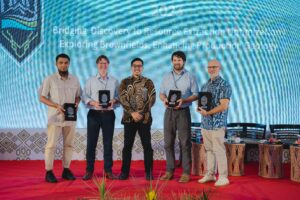As the world’s population passes the 8 billion mark there is little doubt the strain that puts on the Earth’s resources†.
Just think on that for a moment. Clean, potable water is at a premium. Unprocessed food stuffs are not available to a large part of the population. And energy to power washing machines, schools, sewage plants, milk factories and all the rest is more required by more and more people every day.
Many of us are privileged with energy on tap, clean water direct to our kitchens, and fresh air out the window. So, try and imagine yourself without that – as is the case for most of the population on Earth. Yet, energy that may seem in reach is now not as acceptable today as it was yesterday*.
As we move to a more renewable, less carbon constrained future, easily accessible energy from hydrocarbons is not seen as viable. No matter where you sit on that seesaw debate however, it seems inevitable that we should source more energy from renewables.
But to power the electric cars, the phones (our technologies!), the factories, the schools, and our homes will require a prodigious amount of many minerals and elements that can only be gained from mining. That is, to be blunt, digging a hole into the Earth.
Its nice to want wind power, for example, until you do the numbers and realize that in order to build even the low end number of will mills the IPCC recommends, would require more iron ore than is presently known on Earth (Li, 2014). I’m not saying either figure is completely right (uncertainty in these things are always high) but it gives you a metric for comparison and scale.
All of that brings me to the point that earlier this month I gave a Keynote address on the island of Lombok at the 15thAnnual Conference of the Indonesian Society of Economic Geologists (or MGEI = Masyarakat Geologi Ekonomi Indonesia).
The title of my presentation was “Coal as an unconventional ore: mining critical elements for a green economy”. I won’t go into the details of the talk** but the gist of it was that we’ll need to look at many unconventional ores in order to have any hope of finding enough of the critical minerals the world may need to power renewable energy and our technologies in the future.
Coal as a source of critical minerals? Surely not! …you may be thinking. But yes. Indeed. For example almost all of the critical element germanium comes from China and the majority of that comes from…yes, you guest it: coal (Bauk et al., 2023; Dai et al., 2012; Seredin, 2012; Seredin et al., 2013).
So, lets think about technological and energy needs realistically and lets remember to have discussions based in fact and data***. Lets not close doors based on our biases and preconceived ideas. After all, we are surely all after the same thing. I think you know what that is.
†in the time it has taken me to write and post this (~1.5 hrs) the world’s population has increased by 13,400 people.
*One of the many advantages of being a geologist (and there are many!) is that we tend to have a larger perspective than just the here and now: so to us the debate about energy really is just a fraction of a nanosecond in time. To us, the Earth has never been ‘in balance’ and variation is just part of the natural cycle.
** if you’d like a copy download from the following link: Moore MGEI talk 2023
***as the well known professor of geology John Ferm used to say “without data, you are just another asshole with an opinion”. It sounds harsh but you get the point. And it is a very good point.
Bauk, G., Caruso, A., Chin, P., Conca, J., Kamenopoulos, S., Kennedy, J., Kutsch, J., Lifton, J., Mamula, N., Pitron, G., Zhang, M.Y., 2023. China’s rare earth subsides and structural advantages: A comprehensive list of China’s Advantages that must be overcome for any U.S. or Allied rare earth project’s success. Prepared for U.S. House Caucus on Critical Materials, U.S. Department of Energy, Washington D.C.
Dai, S., Wang, X., Seredin, V.V., Hower, J.C., Ward, C.R., O’Keefe, J.M.K., Huang, W., Li, T., Li, X., Liu, H., Xue, W., Zhao, L., 2012. Petrology, mineralogy, and geochemistry of the Ge-rich coal from the Wulantuga Ge ore deposit, Inner Mongolia, China: New data and genetic implications. International Journal of Coal Geology 90-91, 72-99.
Li, M., 2014. Peak oil, climate change, and the limits to China’s economic growth. Routledge, London, 192 pp.
Seredin, V.V., 2012. From coal science to metal production and environmental protection: A newstory of success. International Journal of Coal Geology 90-91, 1-3.
Seredin, V.V., Dai, S., Sun, Y., Chekryzhov, I.Y., 2013. Coal deposits as promising sources of rare metals for alternative power and energy-efficient technologies. Applied Geochemistry 31, 1-11.





Comments are closed.